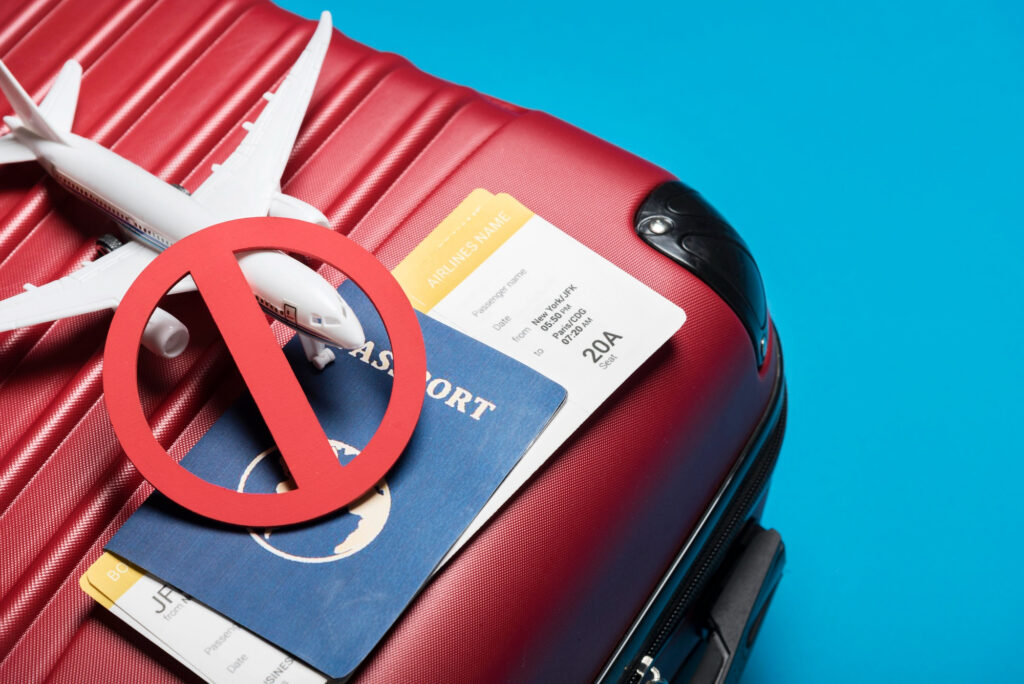Inside the Government’s Obesity Ban and Who Is Now Blocked from Entering the US

You go to another country to work, study, or be with family. You expect people to look at your skills, your plans, your character. Now, more and more, they are also looking at your weight, your blood sugar, and your long term health risks. In the United States, new rules are quietly treating conditions like obesity and diabetes as signs that a person might be too costly to let in. This piece breaks down what changed, how it works in practice, and what it means for anyone who lives in a body that is less than “perfect.”
Beyond the Headlines: What the “Obesity Ban” Really Is

You have probably seen the clips already: “America bans obese foreigners.” “Your BMI is now your visa.” It is loud. It is emotional. But it is not the full story.
What is happening is quieter and more complicated. Instead of a simple sign at the border saying “no entry,” the government has reinterpreted an old rule: the idea that some people are a “public charge,” likely to depend on state support. Chronic conditions like obesity, diabetes and heart disease are now weighed as heavy negative factors when officers decide who is allowed in.
On paper, officers are still told to consider the “totality of circumstances.” They look at health, age, income, insurance, education, and family ties together. In reality, a pattern emerges: the same diagnosis looks very different depending on the size of your bank account. An applicant with obesity and private insurance may pass. An applicant with obesity and a modest income may be turned away.
That is why critics call this an “obesity ban,” even though the law does not write those words. The border is no longer just about where you are from or what you do. It is about what your body might cost.
So this first truth is simple, and unsettling: this is not just an immigration policy. It is a financial filter wrapped in medical language, quietly teaching us to see human beings as potential expenses before we see them as people.
How the Health Test at the Border Changed

For most of U.S. history, the health test at the border was simple to explain: are you carrying something contagious that could harm the public right now? Doctors looked for diseases like tuberculosis and other infections that could spread through a ship, a neighborhood, a school. The focus was on immediate, shared risk, not on predicting a person’s entire medical future.
The new directive flips that logic. Chronic, non infectious conditions such as obesity, diabetes, heart disease, cancer and some mental health disorders are now folded into decisions about who might become a “public charge.” These are not illnesses you catch from a stranger in an airport line. They are long term conditions, shaped by food systems, stress, inequality, genetics and policy.
Consular officers are told to look forward. They are asked, in effect, to estimate the future price tag of a human life. Does this person’s diagnosis suggest expensive care over time? Will they ever need support from public programs? The role begins to resemble that of an insurance underwriter, but with the power to separate families and redirect careers.

Medical organizations describe obesity as a complex, chronic disease that calls for treatment and support, not blame. Yet in this system, that same diagnosis becomes a filter for opportunity.
When a government moves from asking “Could this person spread an infection today?” to “Could this person someday get too sick and cost us money?”, it sends a quiet message about whose body is welcome and whose body is a problem.
Stamped In or Shut Out by Your Diagnosis
So how does an idea this vague become a hard no stamped in someone’s passport?
It starts in a clinic long before the border. Visa applicants meet with a Panel Physician who fills out medical forms that used to focus mostly on infectious diseases. Now those forms quietly do more. They record BMI, blood pressure, A1C levels, and other markers that hint at long term conditions: obesity, diabetes, heart disease.

On their own, those numbers do not decide anything. But they become raw material for a different kind of judgment. The consular officer takes that medical file and plugs it into a “totality of circumstances” test that is almost impossible to see from the outside. They are told to think about the applicant’s “entire expected lifespan” and whether future care might become a “public charge.”
There is no official BMI cutoff written into law. No public chart that says, “Above this number, you are out.” Instead, officers are given wide discretion. A muscular athlete and a sedentary worker can share the same BMI and get very different outcomes. An applicant with a chronic condition and elite private insurance might pass, while another with the same diagnosis and modest means is turned away.
And because of consular non reviewability, most of these decisions cannot be appealed in court. From the applicant’s side, it feels like a black box: you hand over your body data, your financial records, your story, and a stranger decides if your future is affordable enough.
The process pretends to be neutral. But when the rules are this vague and the stakes are this high, bias does not have to shout. It only has to whisper in the dark.
The Human Cost Behind a Visa Denial

Policies sound clean on paper. Lives do not.
Picture a nurse from the Philippines with prediabetes, invited to fill a staff shortage in a U.S. hospital. The salary is life changing. The need on the U.S. side is urgent. Yet her lab numbers and BMI can now be weighed as liabilities. Her skill, fluency, and experience are powerful positives, but one chronic condition may whisper louder: future cost.
Or think of a software engineer from India with Type 2 diabetes. He is already facing a six figure fee slapped on his H-1B visa application. Now his own body is treated as a second barrier. First his employer must pay to even consider bringing him in. Then he must prove that his diagnosis will never touch public funds. Talent has to jump a double wall: financial and biological.
This is where the gap between narrative and reality opens wide. The United States relies heavily on immigrants from countries with rising rates of obesity and diabetes, especially in healthcare, tech, and service industries. At the same time, it is raising the bar in ways that many of its own citizens could not clear.
Panel physicians feel the tension too. They know that conditions like obesity and diabetes are treatable and manageable. Yet every line they write can now be used as evidence against a patient’s right to move, reunite with family, or work. One doctor called the new approach “stigmatizing, medically simplistic, and ethically troubling.”
Behind every stamped denial is not just a chart, but a chain reaction: a family separated, a job unfilled, a dream quietly rerouted to another country that is willing to see more than a risk score.
The Measure of a Person

This is not just an immigration rule.
It is a story about what we believe a human life is worth.
When a country starts sorting people by lab numbers and future price tags, it is not only judging “them.” It is training all of us to see bodies as budgets and diagnoses as destiny.
You might never stand at a U.S. consulate window. But you still live in this mindset every time a headline shames a body, every time a policy treats illness as a moral failure, every time you look in the mirror and measure your value in statistics instead of spirit.
So here is the challenge: refuse that story.
Refuse to let a health condition become a verdict.
Refuse to see anyone, including yourself, as “too expensive to care about.”
Because in the end, this is not only about who gets to cross a border.
It is about who we choose to be on the other side.
Loading...

